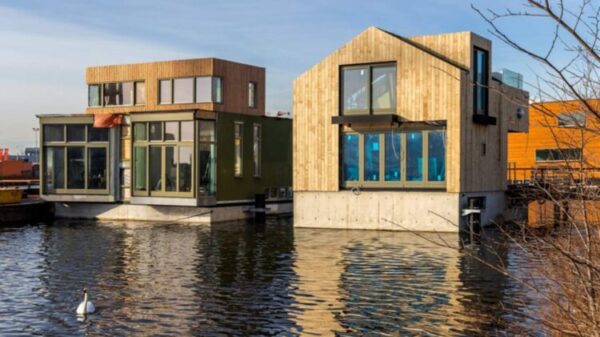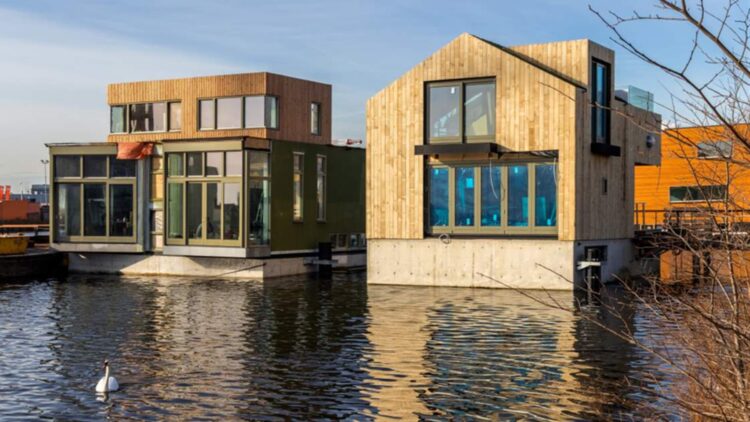The Netherlands is leading the way in innovative housing solutions with the development of floating homes designed to adapt to rising water levels and floods. As climate change poses increasing threats to coastal and low-lying areas globally, Dutch architects and engineers are embracing adaptive architecture rather than traditional flood defenses. This approach has been supported by findings from the Climate-ADAPT report published by the European Environment Agency (EEA), which highlights the effectiveness of floating and amphibious housing in flood-prone regions.
In 2011, a significant test of this design occurred when the Maas River flooded. Homes built on floating foundations seamlessly rose with the water, suffering no damage as levels receded. Today, projects like the floating neighborhood of Schoonschip in Amsterdam and over 200 homes completed by the firm Waterstudio demonstrate the viability of this concept. As global discussions on climate adaptation intensify, particularly at events like COP30 in Brazil, the Dutch model is gaining attention as a promising solution for future urban planning.
Adapting to Water, Not Fighting It
The Netherlands has long been recognized for its advanced water management strategies, with a landscape heavily shaped by a complex network of dikes. Nearly two-thirds of the country would be underwater without these systems. With land becoming increasingly scarce and expensive, especially in densely populated urban centers, the idea of floating homes offers a compelling alternative. This philosophy advocates for engineering that coexists with water rather than resisting it.
Amphibious houses are designed to move vertically along guide posts, anchored to a land base, allowing them to rise during floods. According to the Climate-ADAPT database, such structures are particularly effective in coping with rising water levels. The successful demonstration of this concept during the 2011 floods has led to increased interest in floating architecture.
Challenges and Considerations for Global Expansion
While the benefits of floating homes are clear—flexibility, adaptability, and efficient use of urban space—scaling this concept up for larger cities presents challenges. One major issue is the need for robust connectivity to essential services such as public utilities and sewage systems. These connections are inherently more complex for floating structures compared to traditional buildings.
Additionally, existing building regulations primarily cater to fixed, land-based structures. This creates a need for regulatory frameworks to evolve to accommodate innovative designs. Exporting the Dutch model also raises concerns regarding construction costs, local adaptations, and potential impacts on aquatic ecosystems.
As the discourse at COP30 continues to emphasize adaptation strategies, the Netherlands’ floating homes represent a forward-thinking approach to urban planning. This model not only addresses immediate housing needs but also offers a blueprint for future resilience against the climate crisis, encouraging other nations to rethink their strategies in the face of rising waters.






































































